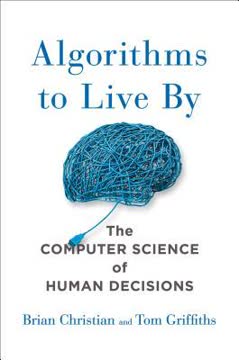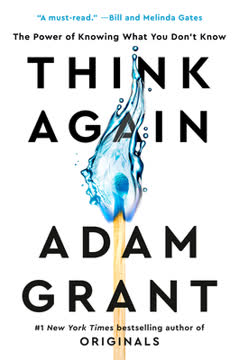Key Takeaways
1. Build a Second Brain to extend your cognitive capabilities
Your Second Brain is like a mind cathedral that you can step into any time you want to shut out the world and imagine a world of your own.
Extend your mind. Building a Second Brain is about creating an external, digital system to store, organize, and retrieve your knowledge. This system acts as an extension of your biological brain, allowing you to offload the cognitive burden of remembering everything. By leveraging technology, you can enhance your ability to capture ideas, make connections, and create new insights.
Overcome limitations. Our biological brains have limitations in memory capacity and recall. A Second Brain helps overcome these constraints by providing a reliable system for storing and accessing information. This frees up mental space for higher-level thinking, creativity, and problem-solving. Instead of struggling to remember details, you can focus on synthesizing ideas and generating novel solutions.
Enhance creativity and productivity. With a well-organized Second Brain, you have instant access to your past thoughts, research, and ideas. This wealth of information becomes a springboard for new connections and insights. By reducing the friction in accessing and combining ideas, you can boost your creative output and productivity in both personal and professional endeavors.
2. Capture ideas that resonate to fuel creativity and productivity
Knowledge isn't always something "out there" that you have to go out and find. It's everywhere, all around you: buried in the emails in your inbox, hidden within files in your documents folder, and waiting on cloud drives.
Curate valuable insights. Capture is about selectively saving ideas, insights, and information that resonate with you. Instead of trying to hoard every piece of information you encounter, focus on preserving the most valuable and relevant content. This curated collection becomes the foundation of your Second Brain.
Use capture criteria. To decide what's worth keeping, consider these criteria:
- Does it inspire you?
- Is it useful?
- Is it personal?
- Is it surprising?
Leverage technology. Use digital tools to make capturing effortless:
- Note-taking apps
- Read-later apps
- Voice memos
- Web clippers
- E-book highlights
By making capture a habit, you create a rich repository of ideas that can fuel your creativity and productivity over time.
3. Organize information for actionability using the PARA system
The most common question I hear about Progressive Summarization is "When should I be doing this highlighting?" The answer is that you should do it when you're getting ready to create something.
PARA system. Organize your digital information into four main categories:
- Projects: Short-term efforts with specific outcomes
- Areas: Ongoing responsibilities you want to maintain
- Resources: Topics or interests for future reference
- Archives: Inactive items from the other categories
Action-oriented organization. This system prioritizes actionability over perfect categorization. By organizing information based on its relevance to your current projects and goals, you ensure that your most important knowledge is readily accessible when you need it.
Flexible and evolving. PARA is designed to be adaptable to your changing needs and priorities. As your projects and interests shift, you can easily move information between categories, ensuring your Second Brain remains relevant and useful over time.
4. Distill notes to their essence for easy retrieval and use
Progressive Summarization is not a method for remembering as much as possible—it is a method for forgetting as much as possible.
Progressive Summarization. This technique involves distilling your notes in layers:
- Original note
- Bold the main points
- Highlight the most important of those points
- Summarize in your own words
Enhance discoverability. By distilling your notes, you make them more discoverable and usable in the future. This process helps you quickly grasp the main ideas without having to re-read entire documents or articles.
Focus on the essence. The goal is not to capture everything, but to identify and preserve the most valuable insights. This process of distillation often leads to deeper understanding and internalization of the information.
5. Express your ideas by sharing your work with others
The purpose of knowledge is to be shared. What's the point of knowing something if it doesn't positively impact anyone, not even yourself?
Share to learn and grow. Expressing your ideas is not just about broadcasting information; it's about learning, refining your thoughts, and contributing to the world. By sharing your work, you invite feedback and collaboration, which can lead to new insights and opportunities.
Start small and iterate. You don't need to create a masterpiece to start sharing. Begin with small pieces of work, like blog posts, social media updates, or presentations to colleagues. As you gain confidence and refine your ideas, you can tackle larger projects.
Overcome perfectionism. Sharing your work helps overcome the fear of imperfection. Remember that your unique perspective has value, and by sharing, you contribute to the collective knowledge and potentially help others who may be struggling with similar challenges.
6. Use CODE (Capture, Organize, Distill, Express) as your knowledge management framework
We are constantly told that we should be true to ourselves and pursue our deepest desires, but what if you don't know what your goals and desires are? What if you have no idea what your "life purpose" is or should be? Self-direction is impossible without self-knowledge.
Systematic approach. CODE provides a structured framework for managing your knowledge:
- Capture: Save ideas that resonate
- Organize: Structure information for actionability
- Distill: Extract the essence of your notes
- Express: Share your work and ideas
Iterative process. These steps are not linear but cyclical. As you express your ideas, you often capture new insights, leading to further organization and distillation. This ongoing process helps refine your thinking and generates new connections.
Tailored to your needs. While the framework provides structure, it's flexible enough to adapt to your specific needs and workflow. Use it as a guide, not a rigid set of rules, to develop a knowledge management system that works for you.
7. Develop habits to maintain and evolve your Second Brain
The maintenance of your Second Brain is very forgiving. Unlike a car engine, nothing will explode, break down, or burst into flames if you let things slide for days, weeks, or even months.
Regular reviews. Implement weekly and monthly reviews to keep your Second Brain organized and relevant:
- Weekly: Process new notes, update projects, and plan for the week ahead
- Monthly: Review goals, reassess projects, and make larger system adjustments
Project checklists. Use checklists for starting and completing projects to ensure consistent use of your Second Brain:
- Project Kickoff: Review relevant notes, set goals, outline next steps
- Project Completion: Archive materials, extract reusable components, reflect on lessons learned
Noticing habits. Develop small habits to continuously improve your system:
- Improve note titles for better searchability
- Move notes to more relevant folders
- Merge or split notes as needed
- Add tags or links to create connections
8. Shift your mindset from scarcity to abundance in knowledge work
The biggest shift that starts to occur as soon as you start creating a Second Brain is the shift from viewing the world through the lens of scarcity to seeing it through the lens of abundance.
Embrace abundance. Recognize that there is more than enough valuable information available. Instead of hoarding every piece of content out of fear of missing out, focus on curating the most relevant and impactful knowledge for your needs.
Quality over quantity. Shift your focus from accumulating vast amounts of information to identifying and leveraging the most valuable insights. This mindset allows you to be more selective and intentional with the knowledge you capture and use.
Trust the process. Understand that you don't need to know everything right now. Your Second Brain allows you to capture ideas for future use, trusting that you'll have access to the right information when you need it.
9. Embrace the creative process through divergence and convergence
Instead of confronting a terrifying blank page, I'm looking at a document filled with quotes: from letters, from primary sources, from scholarly papers, sometimes even my own notes. It's a great technique for warding off the siren song of procrastination.
Divergence and convergence cycle. Creativity involves alternating between two modes:
- Divergence: Exploring possibilities, gathering ideas
- Convergence: Focusing, making decisions, and creating output
Archipelago of Ideas. Use this technique to overcome blank page syndrome:
- Gather relevant notes and quotes
- Arrange them in a logical order
- Use them as stepping stones to create your work
Hemingway Bridge. End work sessions by leaving clear next steps for yourself. This technique maintains momentum and makes it easier to resume work later.
10. Create and leverage Intermediate Packets for efficient output
Intermediate Packets are really a new lens through which you can perceive the atomic units that make up everything you do.
Break work into smaller units. Intermediate Packets (IPs) are discrete pieces of work that can be reused and recombined. Examples include:
- Research summaries
- Outlines
- Diagrams or illustrations
- Code snippets
- Email templates
Benefits of using IPs:
- Increase productivity by working in smaller, manageable chunks
- Facilitate collaboration by sharing discrete pieces of work
- Enable rapid iteration and improvement of ideas
- Allow for easy reuse and repurposing of past work
Create a library of assets. Over time, build a collection of IPs that you can draw upon for future projects, significantly speeding up your creative process.
11. Use project checklists to start and complete work effectively
The completion of a project is a very special time in a knowledge worker's life because it's one of the rare moments when something actually ends.
Project Kickoff Checklist:
- Capture current thoughts on the project
- Review relevant folders or tags
- Search for related terms across all notes
- Move or tag relevant notes to the project
- Create an outline and plan the project
Project Completion Checklist:
- Mark project as complete in task manager
- Review and update associated goals
- Extract reusable Intermediate Packets
- Archive project materials
- Add status note for inactive projects
Consistent process. Using these checklists ensures you consistently leverage your Second Brain at the start and end of projects, maximizing the value of your knowledge management system.
12. Cultivate self-expression and share your unique perspective
Self-expression is as vital to our survival as food or shelter. We must be able to share the stories of our lives—from the small moments of what happened today at school to our grandest theories of what life is about.
Uncover tacit knowledge. Your Second Brain helps surface the knowledge and insights you've gained through experience but may not be consciously aware of. By capturing and organizing your thoughts, you can discover patterns and develop unique perspectives.
Find your voice. Regular expression of your ideas helps you refine your thinking and develop your unique voice. Start small with blog posts, social media updates, or conversations with colleagues, and gradually tackle larger projects as you gain confidence.
Contribute to the world. Your unique experiences and insights have value. By sharing your perspective, you contribute to the collective knowledge and potentially help others who may be facing similar challenges or questions.
Last updated:
Review Summary
Design Your Work by Tiago Forte is a collection of essays on modern productivity, focusing on workflow organization, habit formation, and creative processes. Readers appreciate Forte's fresh perspective and practical insights, though some find the content too technical or underdeveloped. The book covers topics like mood-based task selection, habit formation as an emergent phenomenon, and the importance of narrative in behavior. While some readers found great value in Forte's ideas, others felt the book lacked cohesion and depth compared to similar works in the field.
Praxis Series
Similar Books










Download PDF
Download EPUB
.epub digital book format is ideal for reading ebooks on phones, tablets, and e-readers.






